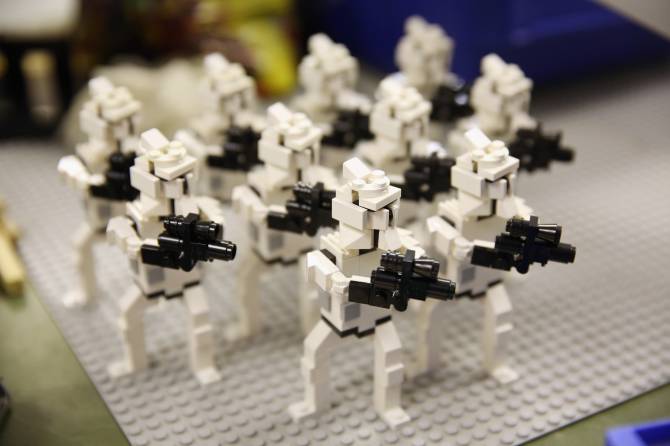By Rebecca Joseph National Online Journalist, Breaking News Global News
Are your child’s toys more violent than the ones you remember?
A new study from researchers in New Zealand suggests that LEGO toys have become more violent over the years.
The study, published online in the journal PLOS ONE, looked at all LEGO block sets sold since 1949, and found “significant exponential increases of violence over time.”
The inclusion of weapons started slow, they said. The first weapons included were a sword, axe and lance in a castle set in 1979.
But it spiked dramatically when the company began producing blasters to include with their Star Wars sets, introduced at around 2007.
“Creators and producers of games and movies strive to push the limits of what violent media is allowed to be released to prevent their audience from getting bored of similar content,” it reads.
“To catch the attention of their customers, toy manufacturers are similarly locked in a metaphorical arms race for exciting new products.”
While exposure to violent video games and media has been linked to an increase of aggressive behaviour and a decrease of empathy in children, the same has not been proven for an exposure to violent toys.
“In my experience as a psychiatrist, and as a parent, it really comes down to the context in which that weapon is being utilized and the guidance provided,” Dr. Shimi Kang, child psychiatrist and author of The Dolphin Parent, says.
“The parental guidance and the parental expectations are a key factor in terms of children and how they would translate weapons in their games to real life.”
But there’s another side of the issue she’s worried about. She says branded LEGO sets that include weapons, like Star Wars and Lord of the Rings, are taking some of the imagination out of playtime.
“Instead of having a nameless, faceless character that can do whatever the child imagines it can do, it’s now Luke Skywalker or Darth Vader…
“Darth Vader is always going to be evil and mean. So that takes the imagination away, and it also encourages the violence… because the character is so set.”


